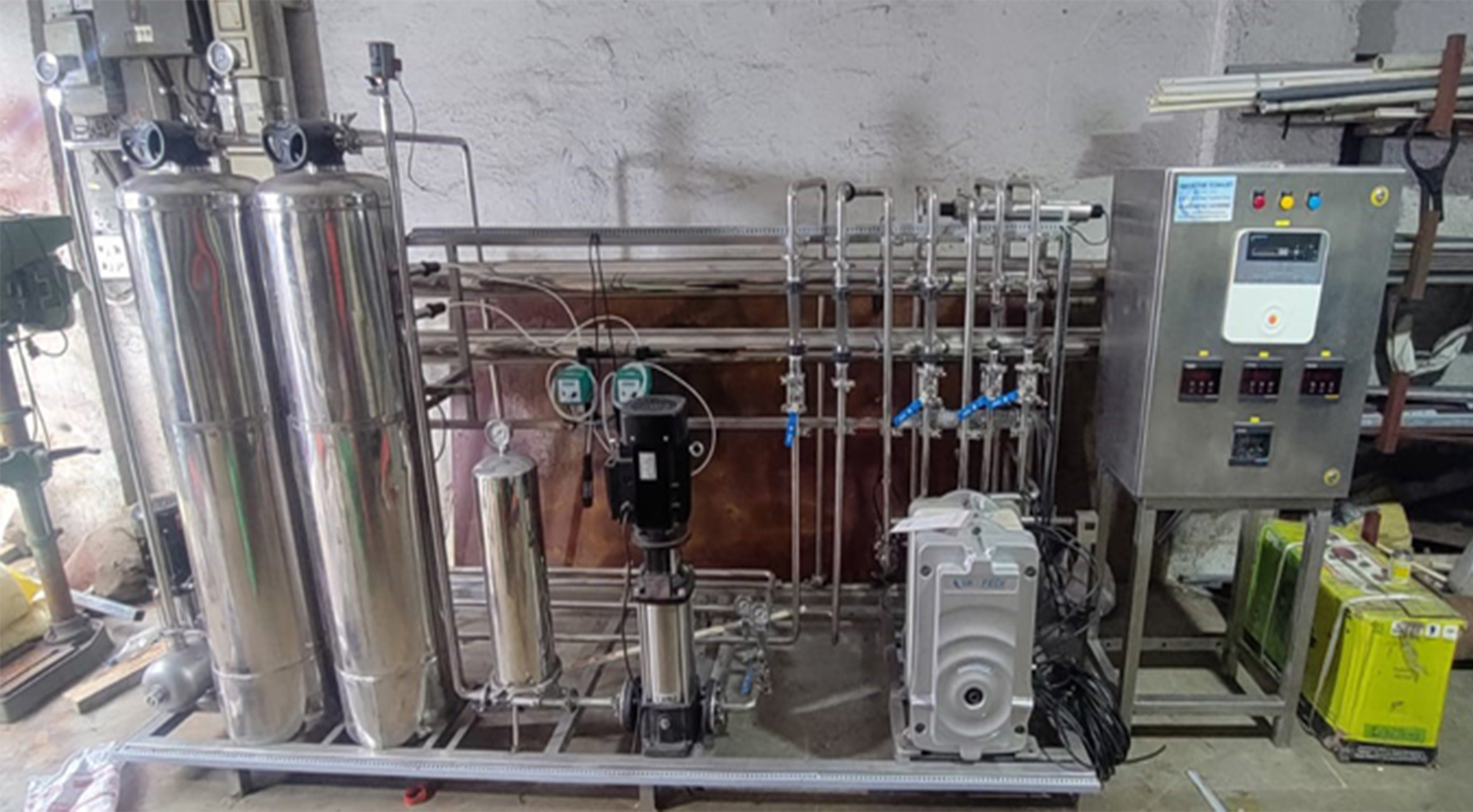Electro Deionizer (EDI) systems

Electro Deionizer, Electro Deionizer System And Electro Deionization System
Aqua Systems Technology is a leading manufacturer, supplier, and exporter of advanced Electro Deionizer (EDI) systems, catering to industries that demand high-purity water. Our EDI systems are designed to provide continuous, chemical-free deionization by using a combination of ion-exchange membranes and electrical current, ensuring an efficient and sustainable solution for water purification.
Electro Deionizer (EDI) systems are ideal for applications requiring ultra-pure water, such as pharmaceutical manufacturing, power generation, and semiconductor production. Unlike conventional deionization processes that rely on periodic regeneration using harsh chemicals, our EDI systems offer a green alternative by eliminating the need for chemical regeneration, thus reducing operational costs and environmental impact. Our technology combines cutting-edge engineering and expertise to deliver reliable, long-term performance.
At Aqua Systems Technology, we pride ourselves on the design and manufacturing of Electro Deionizer systems that meet the highest industry standards. Our EDI systems incorporate advanced ion exchange resins and electrochemical technology to continuously remove ionized species from water, such as salts and other contaminants. The result is high-purity water that exceeds industry specifications, providing a solution that is not only effective but also cost-efficient.
Our Electro Deionization systems are robust and customizable, ensuring they can be adapted to suit the specific needs of various industries. Whether it’s a small-scale operation or a large industrial plant, we offer scalable solutions that deliver consistent water quality with minimal maintenance.
As a trusted supplier and exporter of Electro Deionizer systems, Aqua Systems Technology has established a strong reputation for delivering high-quality products to both domestic and international markets. We ensure that our clients receive comprehensive support, from system design and installation to after-sales service. Our commitment to quality and customer satisfaction drives us to continually innovate and enhance our systems, keeping pace with the evolving demands of the water treatment industry.
By choosing Aqua Systems Technology, you benefit from a partner with extensive expertise in Electro Deionizer systems, offering you reliable solutions for your water purification needs. Whether you are looking for a chemical-free solution for your water treatment or seeking to reduce your environmental footprint, our EDI systems provide the perfect answer.
EDI advantages
- CONTINUOUS PROCESS :
EDI provides a simple and continuous operation with no downtime due to the electrochemical regeneration. - NO USE OF CHEMICALS :
EDI utilizes chemical-free regeneration. Therefore, no storage or application of chemicals is required. - SPACE-SAVING PLANTS :
The EDI plants are space-saving due to the very compact design.
Typical applications of EDI
Water for Power Plant
Instead of using a conventional mixed bed, a membrane degasser in combination with EDI can produce high-quality demineralized water without using any chemicals. This provides corrosion-free boiler feedwater with low conductivity and silica content.
Ultrapure Process Water
EDI after reverse osmosis supplies ultrapure process water with low conductivity. The photo shows EDI for ultrapure water at a microelectronic company. The EDI is customized with special pharma modules for a hygienic design.
Water for Pharma
Purified water production within pharma industries requires a water treatment system in a hygienic design. The EDI is customized to meet the current versions of Standards.
Enquiry